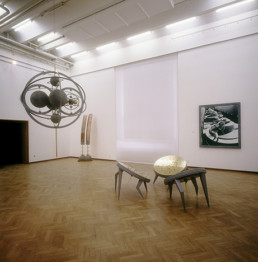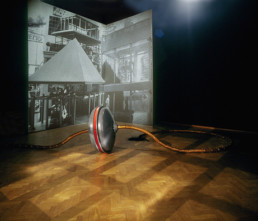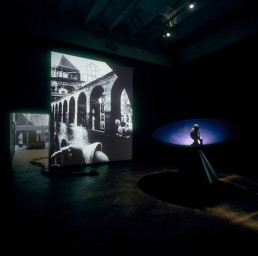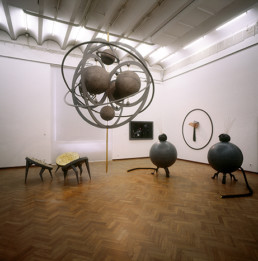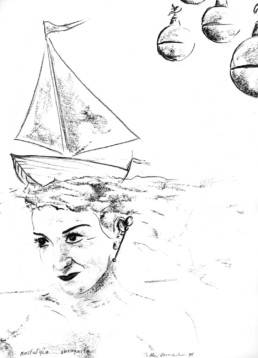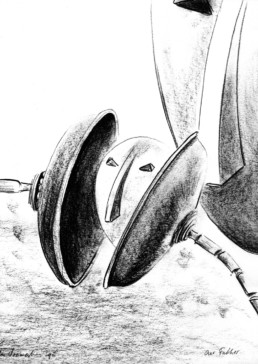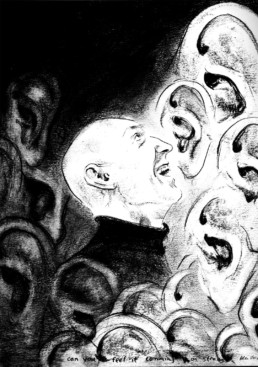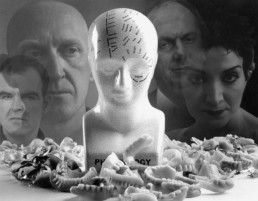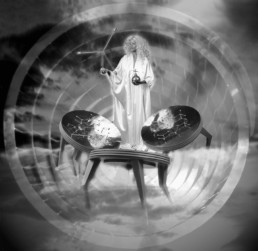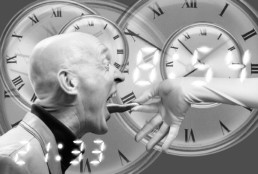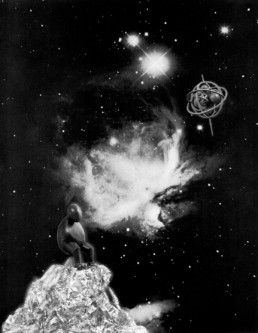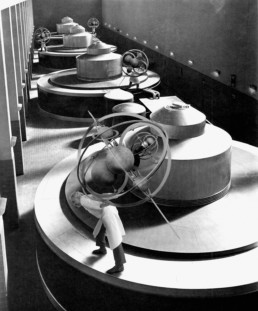Time is the theme of Fuga Futuri (1995), the last book so far.
As is often the case when philistines take power somewhere, the rulers of Terra Refrigera have created a past for themselves. Fuga Futuri is a sequel to Terra Refrigera.
The entire city has become infected with the Disease by now. Dissidents have learned to develop their intuitive, instinctive sides in the meantime. This was imperative, since thoughts are monitored by the government and feelings do not speak in thoughts. (The latter echoes the dichotomies of earlier books.)
Through the story it gradually becomes evident that the main character is again writing from Terra Refrigera. There is an urgent desire or need to investigate the bleak, ‘underground’ aspects of humanity, and degrading circumstances must be tolerated. There can be no sweeping of the deck without descending into what lies hidden beneath the ice. Terra Refrigera then becomes a place of spiritual cleansing, an initiation through which the mystic must pass in order to attain that indescribable loneliness.
Although time, in fact, does not excist in Terra Refrigera, there is a Clock; this has been placed in the care of someone called Limitio, and that is of course what time, at least the clock’s time, does: it divides the whole into parts, on the basis of once established agreements, and thereby does allow all sorts of things to become possible but, at the same time, introduces a high degree of limitation.
In any case, ‘no time’ or ‘the eternal now’ or ‘the moment that counts’ is the actual unmentionable goal of the mystic, the one who seeks the essence of things. Seen in that light, it is no surprise that the main character stops the Clock so that time actually does come to a halt. The Clock is set in motion again, and as soon as that happens, the restorer and guardian of the Clock, Limito, proves to be another manifestation of the main character.
In these books, possibly all of the characters can be regarded as metaphorical facets of the one main character.
The social references in the work of Vermeulen are such that one can see them more as metaphors for introspection . Perhaps the central theme in the oeuvre of Vermeulen could be described as the dualism in man which can no longer be resolved easily in these times by the construction of a synthesis but at least takes shape in a kaleidoscopic disintegration of known values. In the books, text and image (manipulated photographs, drawings and sculptures) exist rather independently of each other, also when they clearly can be related to each other.
In addition to this, the design is consistently of such a nature that the image – apart from its own obvious autonomy- fulfills an illustrative function throughout the whole of the story.
The reverse relationship, which is also conceivable, in which the text becomes a caption, as it were, for the image does arise as well, but less frequently. In a narrative structure, as in books, time and particularly chronology ploy a different role than in cinematography. The reader/viewer controls time to a certain extent; he can leaf back through the pages or read ahead. In film, the chronology is determined, and time passes in the film in accordance with its own images. The series of ‘film books’ seems to have come to an end for now; by way of the photographic and printed media, the next step is a logical one: at the moment Alex Vermeulen is working on a motion picture.
